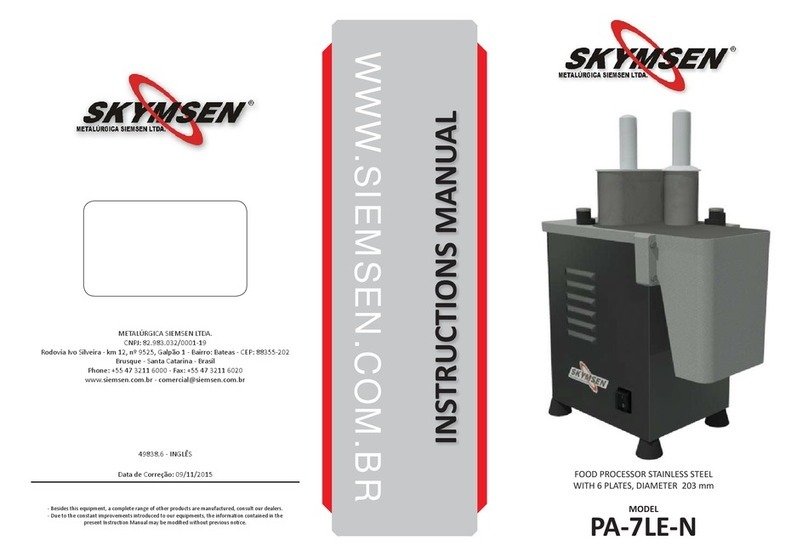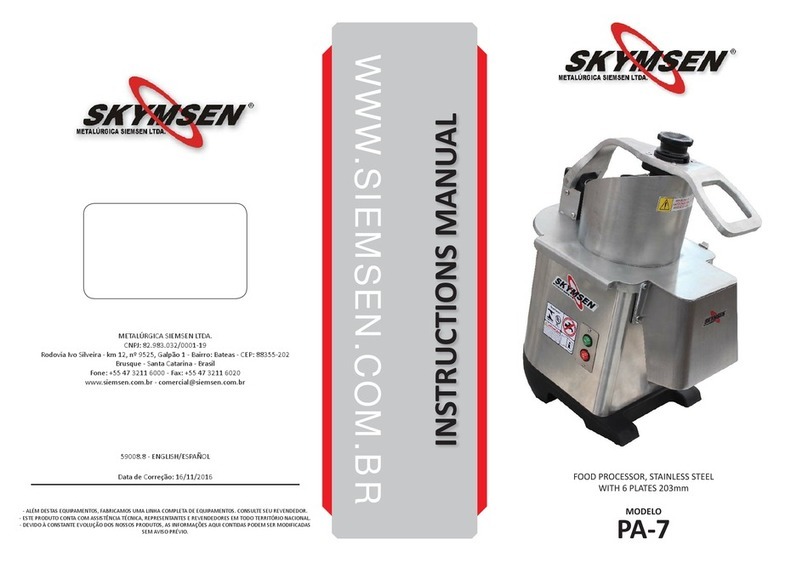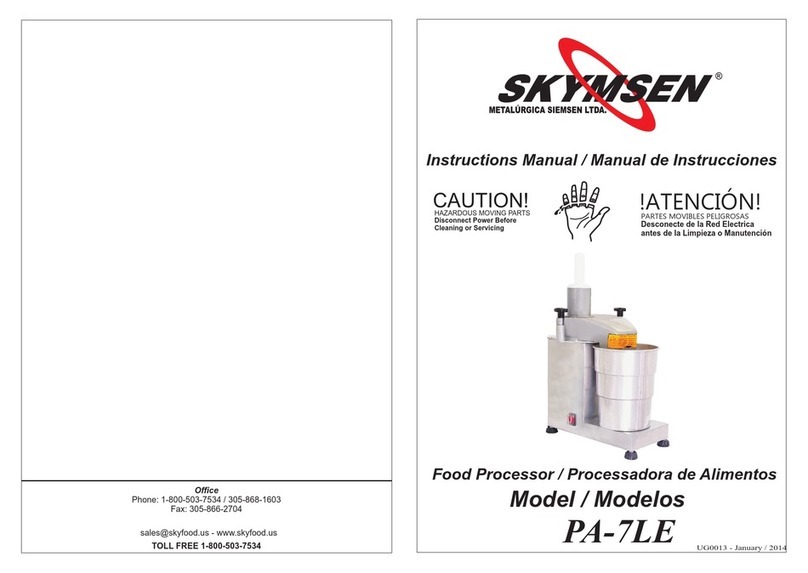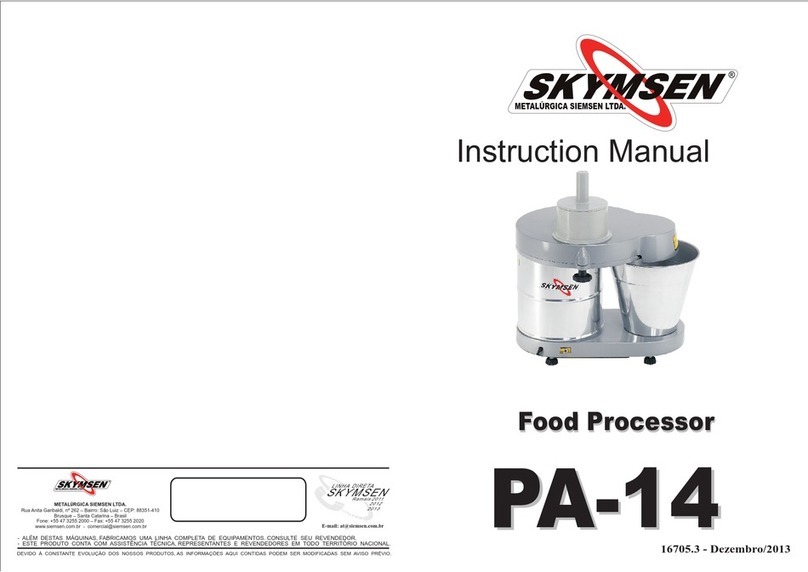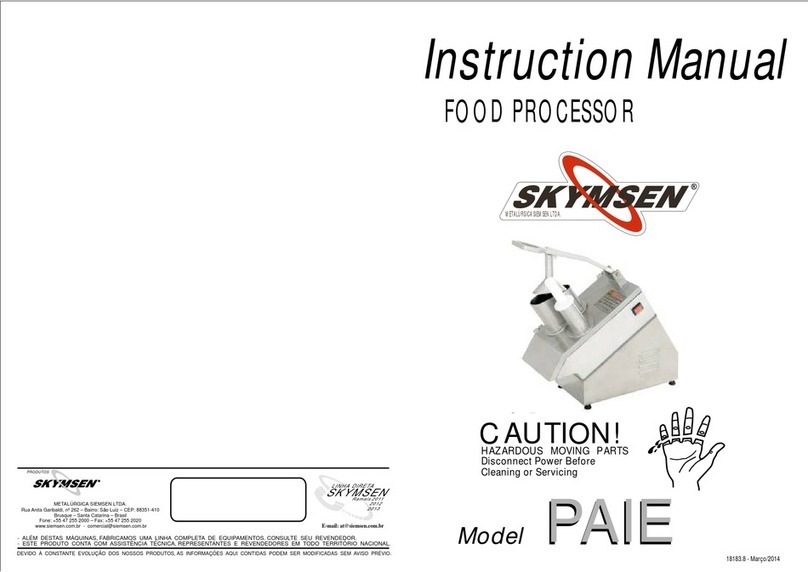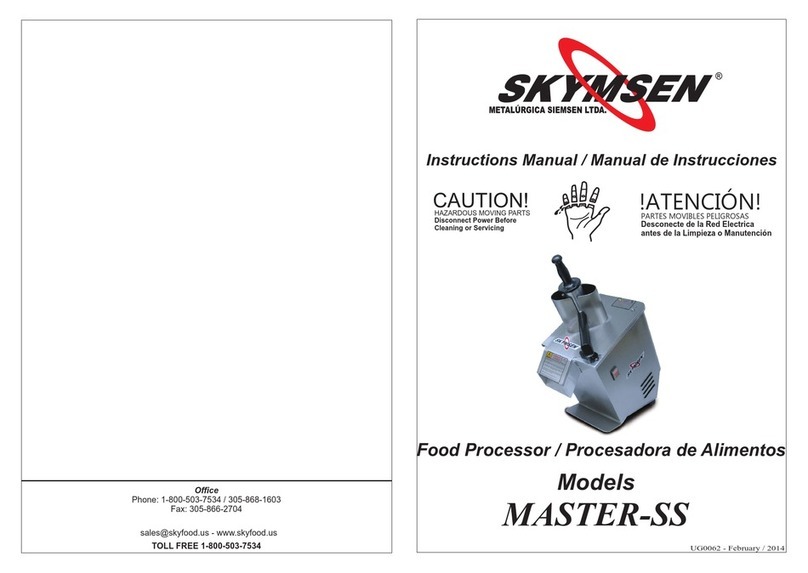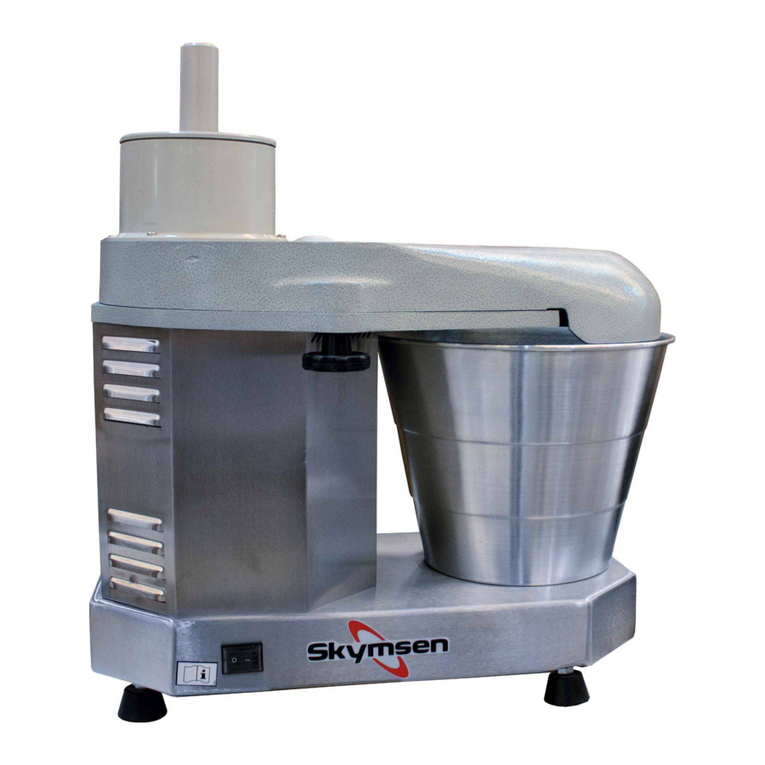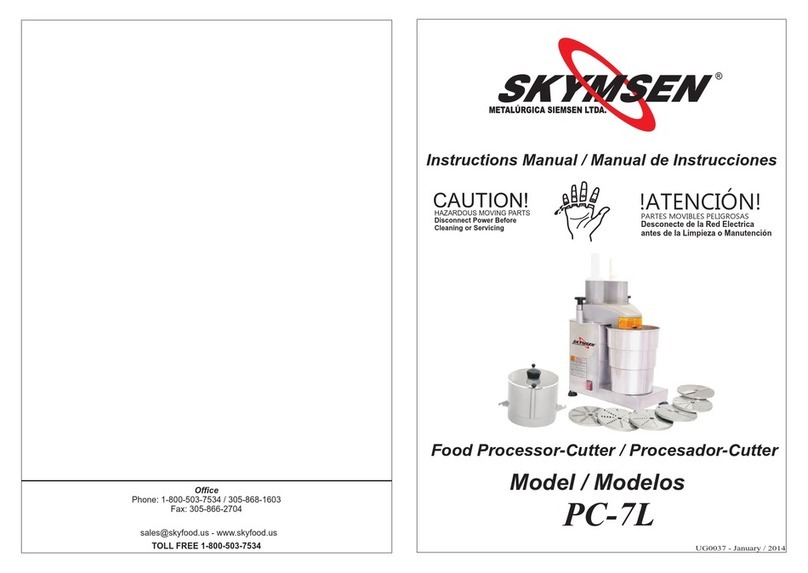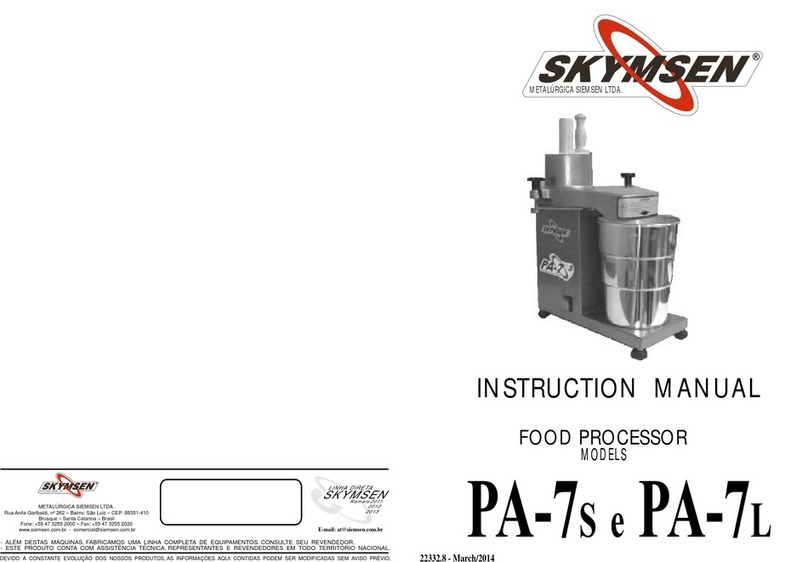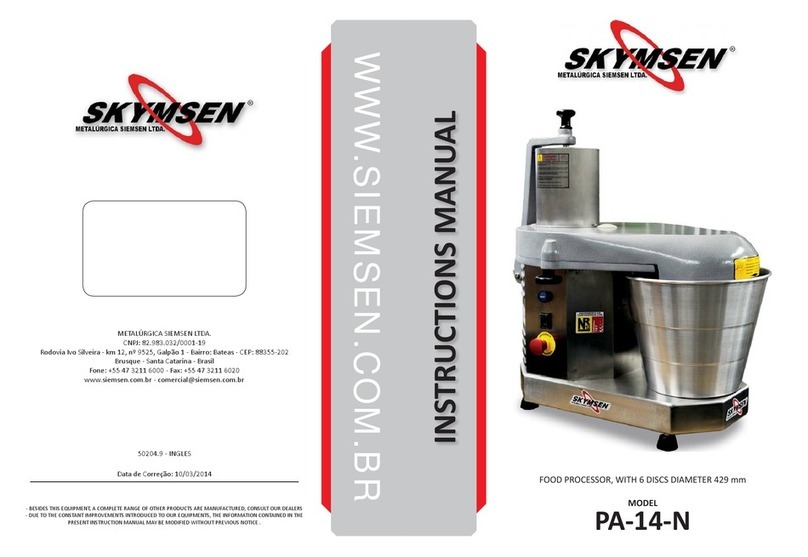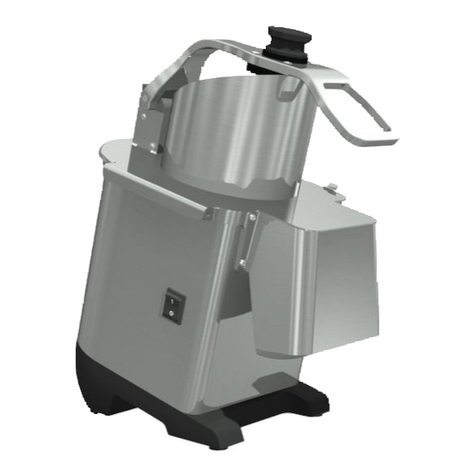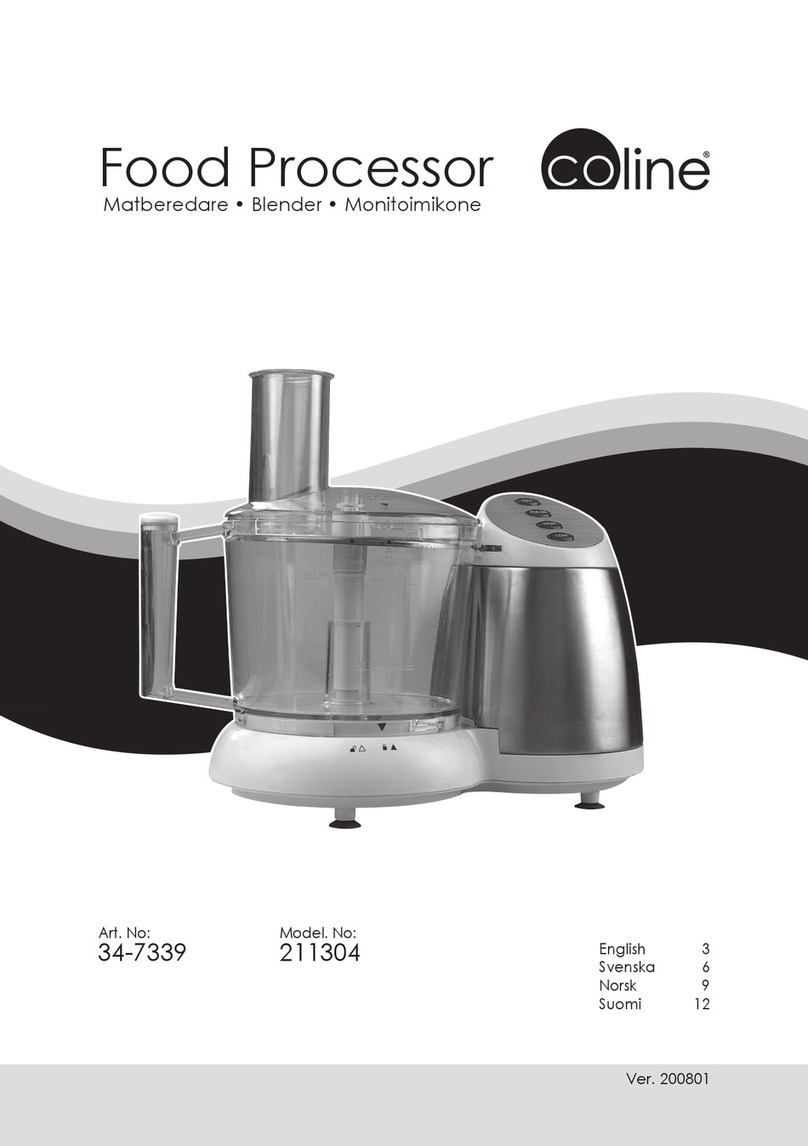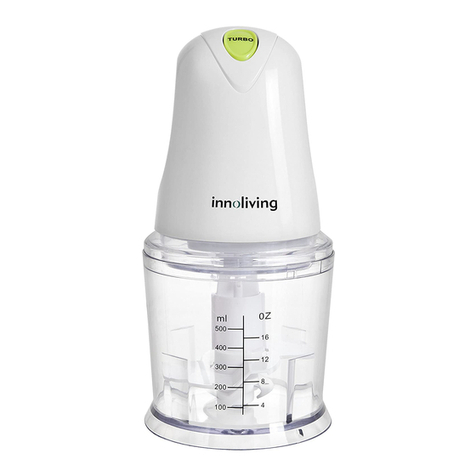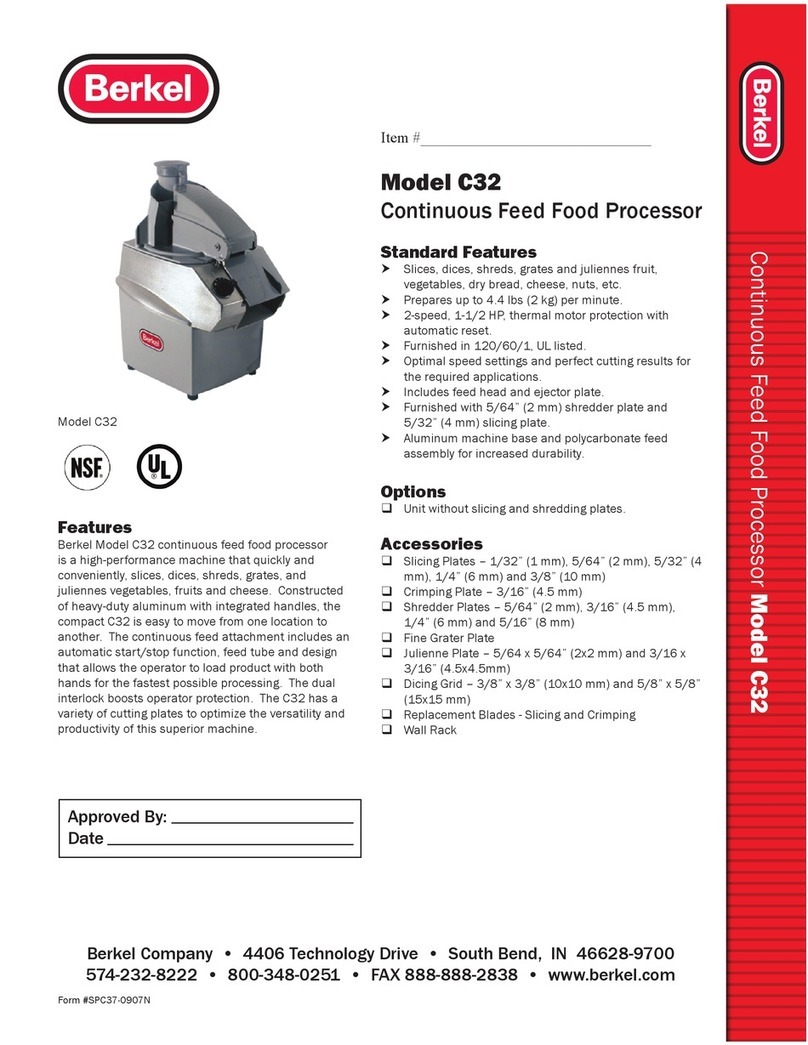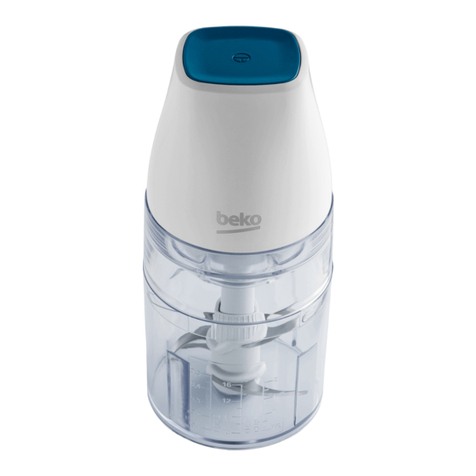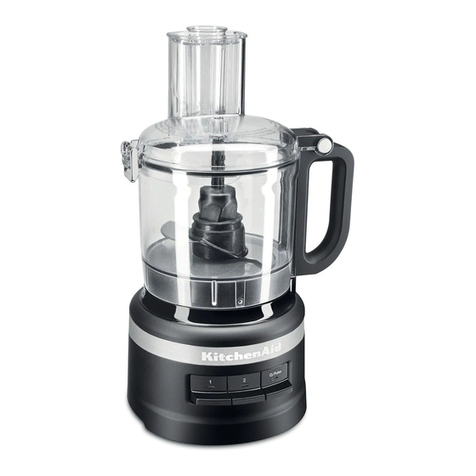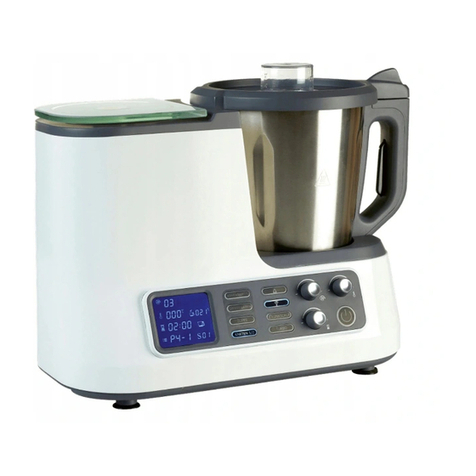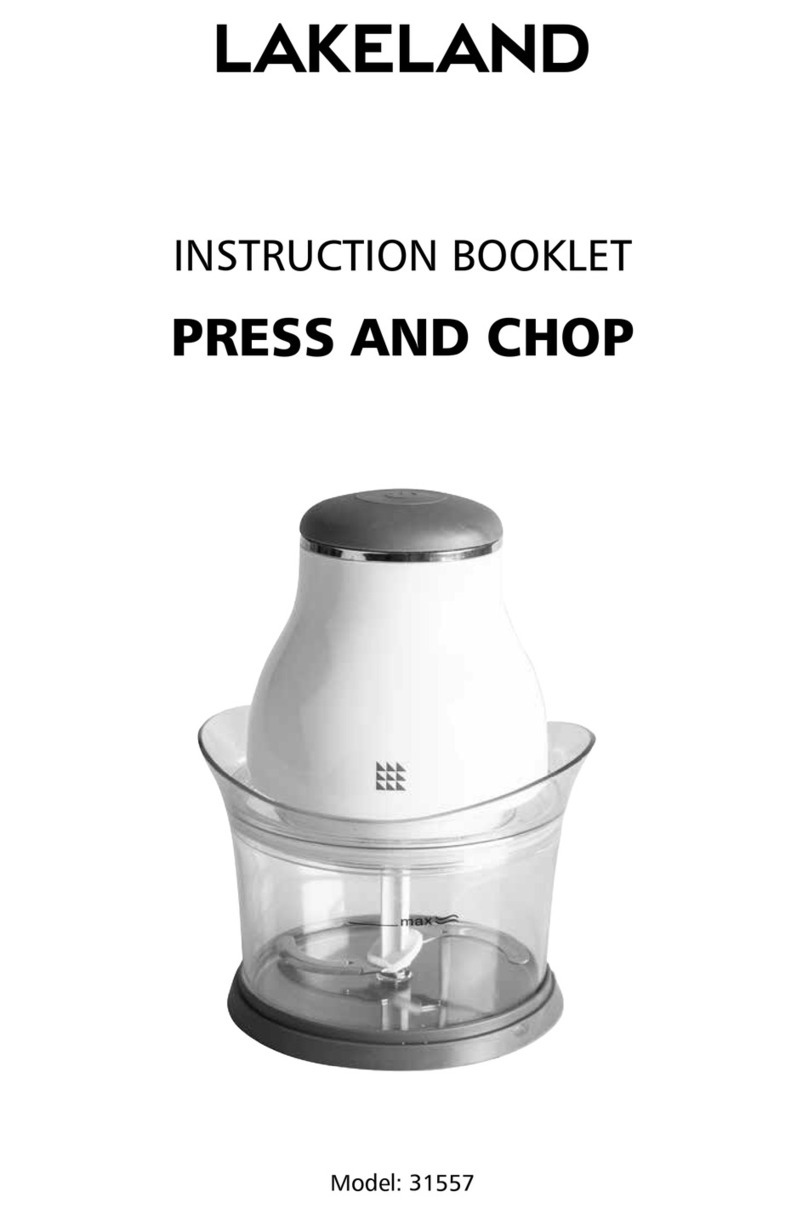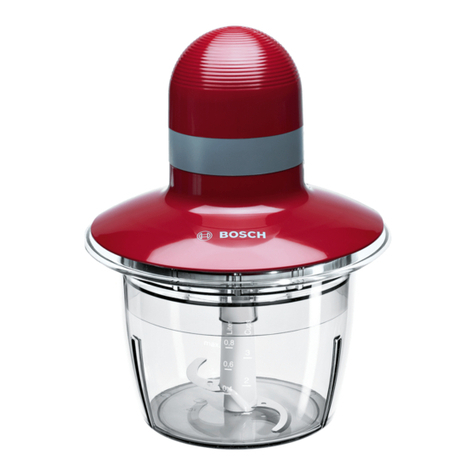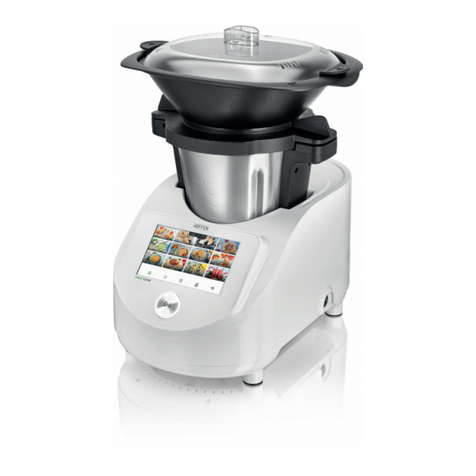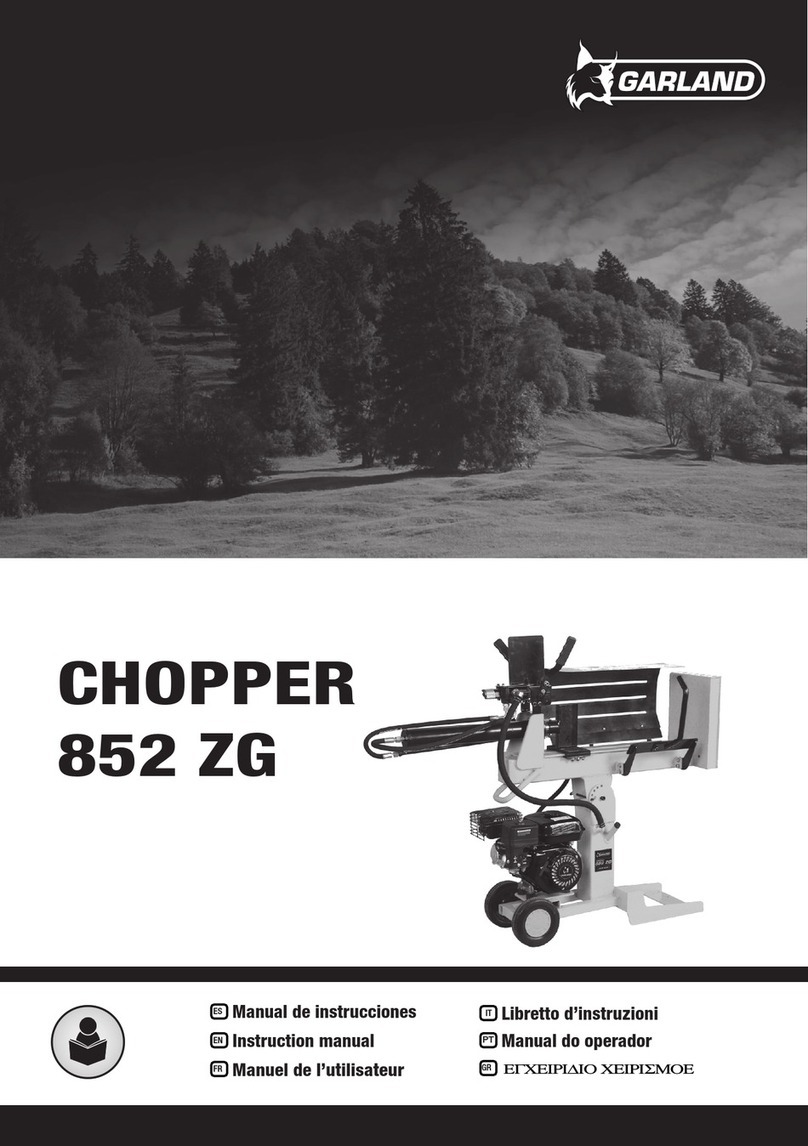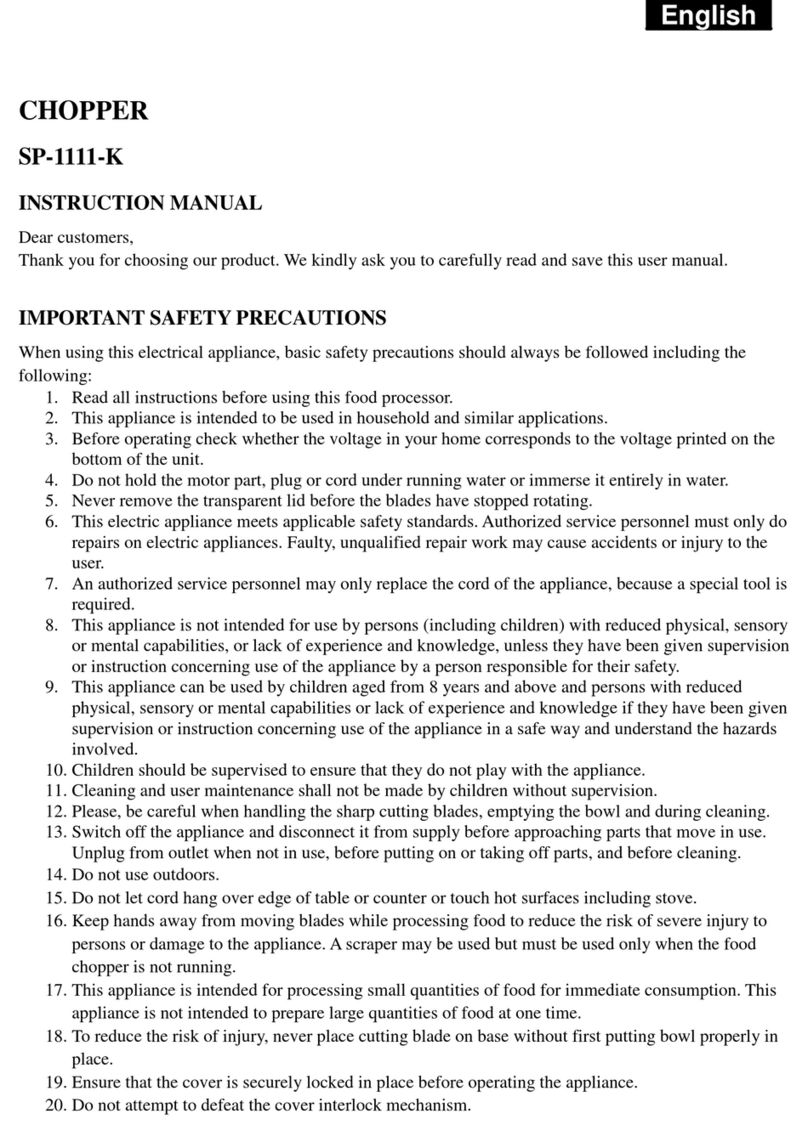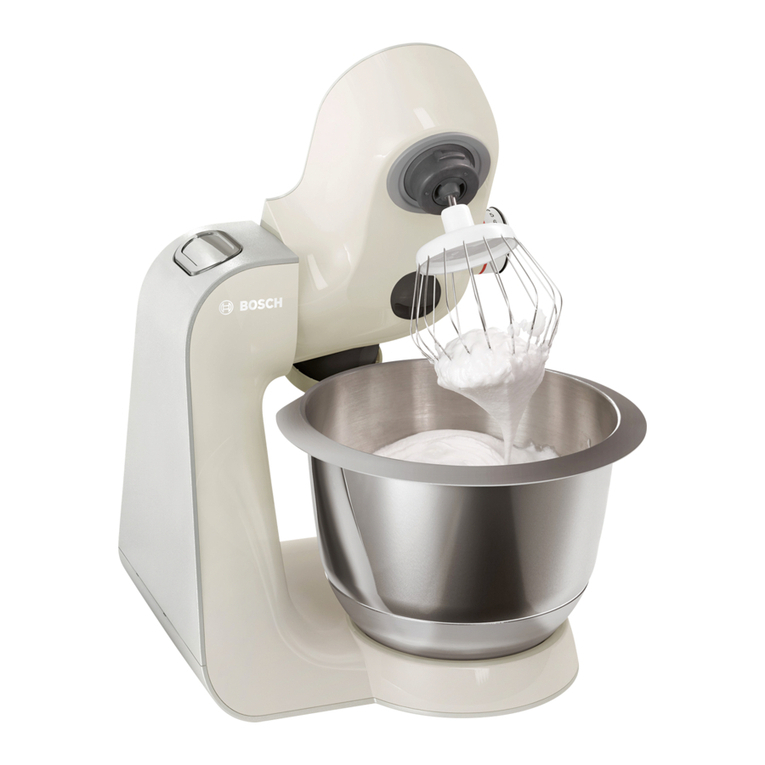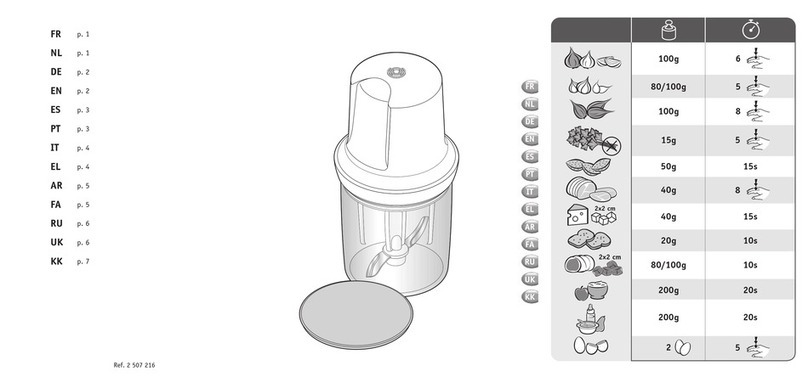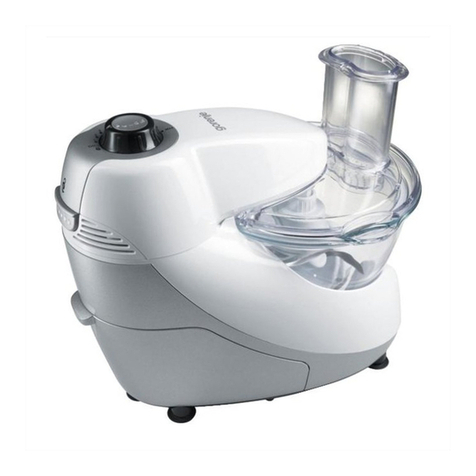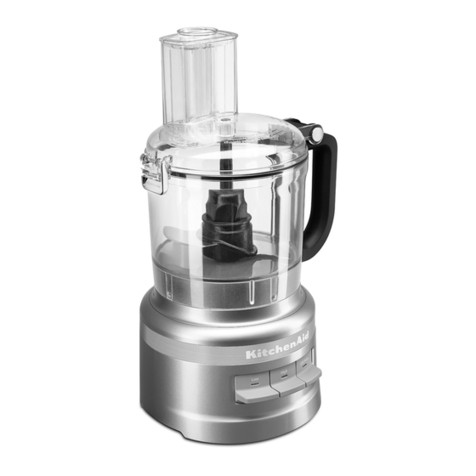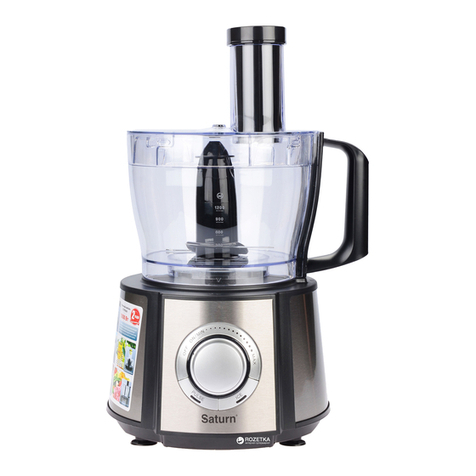05
BEET SLICE 1.5 and 3 mm slicer
SHREDS 3, 5, 8 mm shredder
CARROTS SLICE 1.5 and 3 mm slicer
SHREDS 3, 5, 8 mm shredder
GRATERS GRATER
CABBAGE SLICE 1.5 and 3 mm slicer
SHREDS 3, 5, 8 mm shredder
MUSHROOMS SLICE 1.5 and 3 mm slicer
ONION SLICE 1.5 and 3 mm slicer
PEPPER SLICE 1.5 and 3 mm slicer
RADISH SLICE 1.5 and 3 mm slicer
SHREDS 3, 5, 8 mm shredder
LEAVES SLICE 1.5 and 3 mm slicer
POTATOES SLICE-CHIPS 1.5 and 3 mm slicer
STRAW 3, 5, 8 mm shredder
ORANGES SLICE 1.5 and 3 mm slicer
COCO NUTS SHREDS 3, 5, 8 mm shredder
GRATERS GRATER
Cutting Selection Table
To adjust voltage use the Voltage Selector Switch to be found on the back
side of the processor Base.
Move the Switch to the desired voltage.
The power plug has 3 pins and the middle pin is the ground . It is
mandatory all the 3 pins must be properly connected .before to start
operation.
The processor shall be firm on its position.
Before firth operation wash with water and neutral soap all the parts
which are to be in contact with the products to be processed.
The below Table 03 helps to select the correct Plate for the desired
operation.
2.2 Pre Operation
IMPORTANT
Before to start operation make sure the
plate is correctly fixed , to avoid damages to the machine.
2.3 Plate Selection
Table 03
